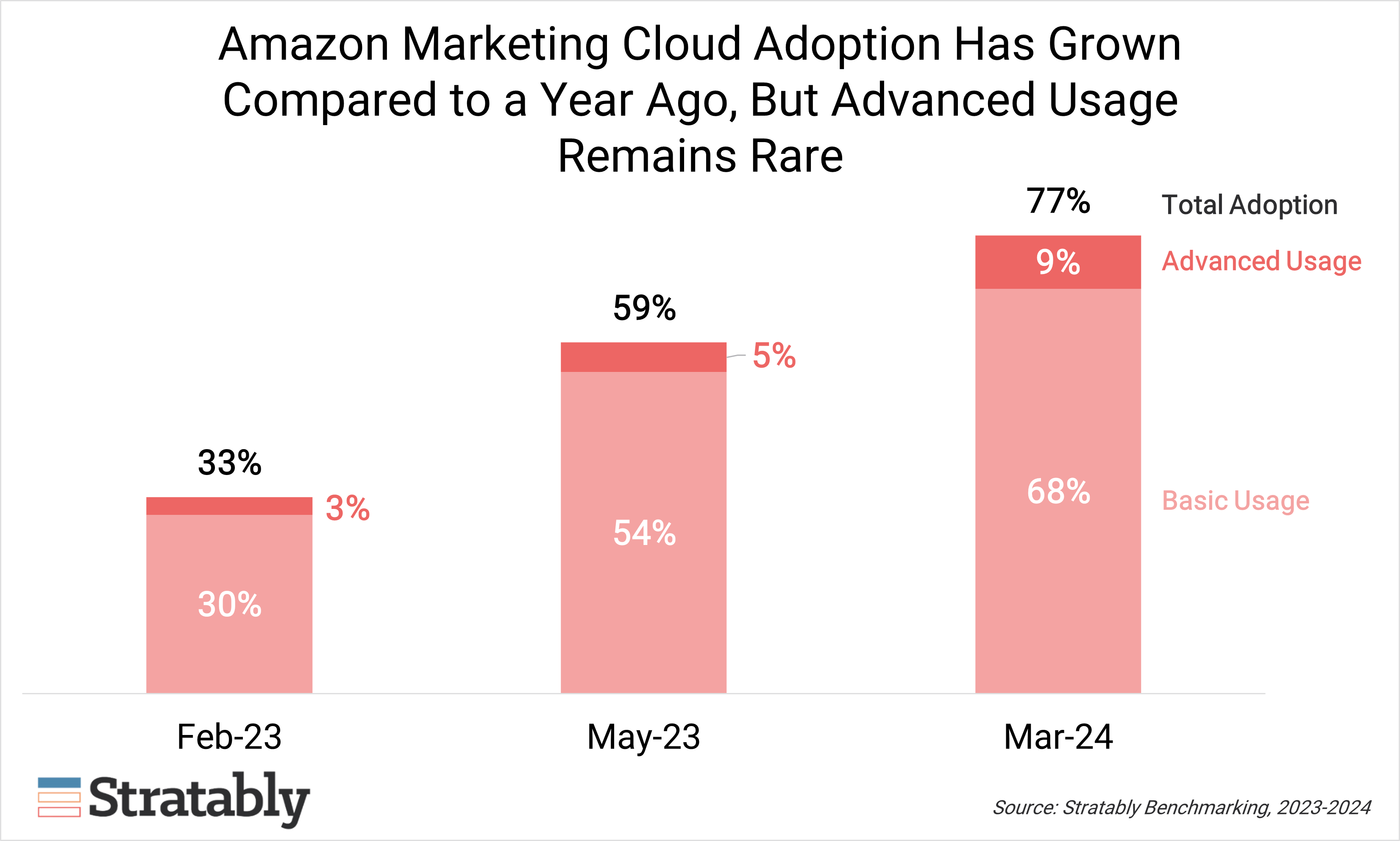April 1, 2024
2 minute read
The purpose of writing “Amazon Marketing Cloud (everything I’ve learned so far)” in April 2022 was to alert brands and agencies that Amazon Marketing Cloud was a new, under-adopted, powerful tool that they could use as a competitive edge against their competition.
Few had heard of it and even fewer had in-house staff with experience to access it.
Amazon barely marketed AMC, and it had no educational materials on the subject.
A lot has changed in those two years.
- Amazon now offers AMC certification
- There are dozens of interesting use cases shared on LinkedIn EVERY day
- eCommerce conference organizers are including the topic in their agendas
- And we know brands are spending more money on Amazon DSP.
Digital leaders are increasingly sharing their excitement about its capabilities too. For instance, AJ Patel, VP of Global Growth at U Beauty was interviewed on a recent eCommerce Braintrust Podcast (ep. 334), “AMC is fantastic, there is so much you can do with it. It’s really an under-utilized solution I think for a lot of brands and businesses. AMC is a game changer for businesses and definitely should be utilized by more and more by brands.”
Adoption of AMC has grown meaningfully in the last year, with 4-in-5 brands telling us they’re using it.
That’s up from 33% adoption a year ago, and an estimated 5% two years ago.
The adoption rate has been steeper than even the all-powerful Sponsored Products back in 2014.
But despite the vast majority of brands “using” AMC, a significant competitive edge opportunity persists.
How?
AMC “usage” dances on a spectrum, from simple dashboarding and pre-built queries to advanced custom queries. A year ago, 5% of brands reported they were using AMC in a sophisticated way. Today, only 9% of brands are doing so.

In other words, in the last 12 months, advanced AMC usage has grown by a meager four percentage points.
Brands might be looking at a dashboard inside their ad software tool or using some of Amazon’s pre-built queries. This is absolutely a positive activity, and a great place to start to get value out of the platform.
But few are using AMC to root out Made-for-Advertising sites, only a small percentage are deriving more value out of their first-party data, and most aren’t keeping up with the new signals Amazon is bringing to the tool.
In addition, too few of brands have decided to take ownership over their AMC roadmap, relinquishing it to their agency partner.
In fact, just 16% of brands say they are using internal resources to drive AMC usage. It makes sense why this is the case, as agency partners are executing brands’ ad strategies, making it logical they’d be the ones to leverage AMC.
But brands should understand most agencies are behind the curve when it comes to AMC.
Unless the brand is dialed in on the potential of AMC, they’re clueless, checking the box when their agency tells them they’re using it, and unable to hit the ball back to understand what unique insights and targeting strategies the agency has uncovered for their specific brand.
Amazon is as competitive as it gets in retail.
Brands are investing more money into Amazon, leveraging it as a core part of their growth strategy, and cite improving media efficiency as a top margin lever they want to pull this year.
The 9% of brands using AMC in a sophisticated way have the best chance to make this happen.
The other 91% are fighting with one arm tied behind their back.


